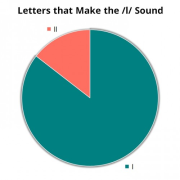How to Pronounce the /l/ Sound

In this lesson, we are going to learn all there is about how we can produce the /l/ sound using the appropriate articulatory organs.
What Type of Sound Is /l/?
/l/ is a consonant sound in the English language.
How to Produce /l/?


In the picture (b), the tongue plays a major part in the production of this sound. In order to produce it, curl up your tongue so that its tip makes contact with the roof of the mouth behind the front teeth. Note that the uvula has blocked the air from going through the nose. Also, you have to pay attention that the circle in the throat is red indicating that the vocal cords do vibrate. So, it is voiced.
In picture (a), you can see that the lips are parted and the teeth are separate. You can see that the tongue has raised and is touching the roof of the mouth.
In picture (c), you can see where you must put the tip of your tongue in order to pronounce /l/.
If you take a look at the picture below, you will recognize that the tip of the tongue has been put outside of the mouth. It might come in handy to know that some native English speakers pronounce /l/ this way. You can use it to help you produce this sound. First, you can stick the tip of your tongue out a bit and then, as you make progress, you can pull it in. Look:
Which Letters are Pronounced as /l/?
The /l/ sound is represented by the letters below:


l:
look /lʊk/
light /laɪt/
leery /lɪr.i/
legacy /leɡ·ə·si/
ll:
small /smɔl/
skill /skɪl/
gallon /ˈɡælən/
Tip!
There are two sounds for the letter "L" in the IPA Sound System: "light L," which occurs at the start of words before vowels, and "dark L," represented by /ɫ/, which appears after vowels. When pronouncing dark /l/, the back of the tongue raises toward the uvula, while the tip presses against the upper front teeth, creating tension. In contrast, light /l/ is produced with a more relaxed tongue. In both sounds, the middle part of the tongue does not touch anything. Compare:
tell /tɛɫ/
real /riː.əɫ/
ball /bɑːɫ/
/l/ Sound in the Most Common World Languages
As you can see in the table below, almost all of the common languages spoken across the globe have this /l/ sound. Look:
Existence | Example | |
|---|---|---|
Mandarin | ✔ | 蘭 (lán) |
Spanish | ✔ | altar |
Hindi | ✔ | लब |
Bengali | ✔ | মালিনী |
Portuguese | ✔ | alô |
Russian | ✔ | малый |
Japanese | x | - |
Vietnamese | ✔ | là |
Turkish | ✔ | lale |
French | ✔ | il |
German | ✔ | Liebe |
Italian | ✔ | letto |
Persian | ✔ | لاما |
Standard Arabic | ✔ | لا |
Korean | ✔ | 일 |
Indonesian | ✔ | lama |
Filipino | ✔ | luto |
Hungarian | ✔ | elem |
Dutch | ✔ | laten |
Polish | ✔ | pole |
Romanian | ✔ | alună |
Swedish | ✔ | lov |
Czech | ✔ | lak |
Greek | ✔ | λέξη |
Ukrainian | ✔ | обличчя |
Urdu | ✔ | لب |
Listening
Below, there is an audio file that helps you learn the proper pronunciation of the /l/ sound:
Comments
(0)